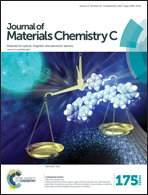Cu3Se2 nanostructure as a counter electrode for high efficiency quantum dot-sensitized solar cells
Abstract
Transition metal chalcogenide nanocrystals have increasingly been used in quantum dot-sensitized solar cells (QDSCs) as a counter electrode (CE) to improve their power conversion efficiency (PCE) due to their high catalytic activity. Herein, we report a Cu3Se2 nanostructured CE composed of nanorods and nanosheets for high efficiency QDSCs. Cu3Se2 nanocrystals were directly grown on the surface of fluorine-doped tin oxide (FTO) glass to form a double-layer morphology via the chemical bath deposition (CBD) process. Nanorod arrays with the height of 100 nm were covered by nanosheets with the size of approximately 500 nm. When the CBD time is 3 h, the QDSC shows the highest efficiency due to the excellent catalytic ability and conductivity of the Cu3Se2 CE. As a result, the PCE of the QDSCs using Cu3Se2 CE has the highest value of 5.05% and average value 4.96%, which are much higher than that of the solar cell using the conventional CE of compact CuxS (4.10% for the highest value and 4.06% for the average value). This is attributed to the large surface area, high conductivity and good electrocatalytic ability of the nanostructured Cu3Se2 CE.


 Please wait while we load your content...
Please wait while we load your content...